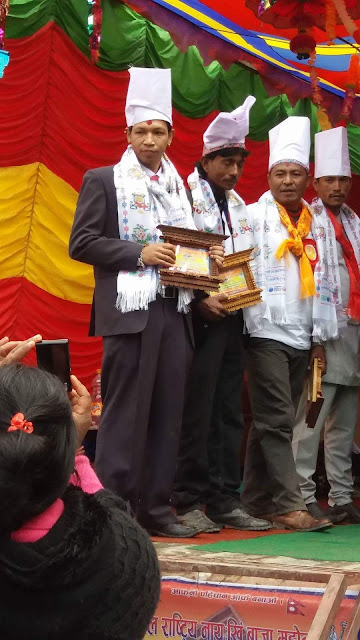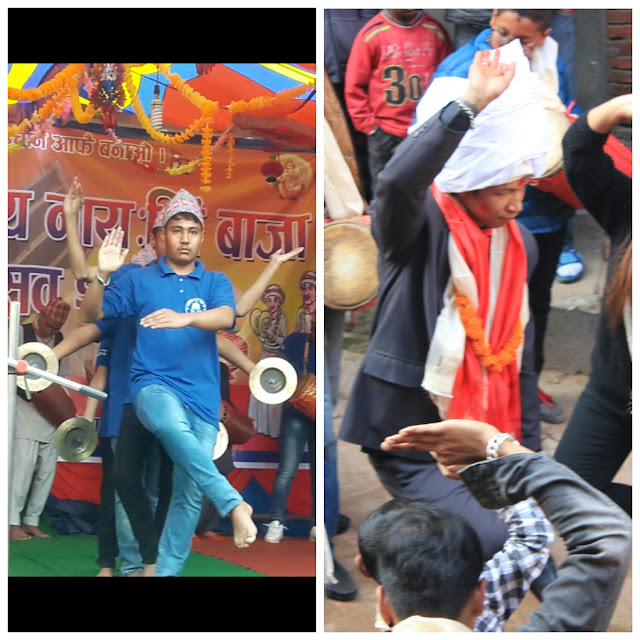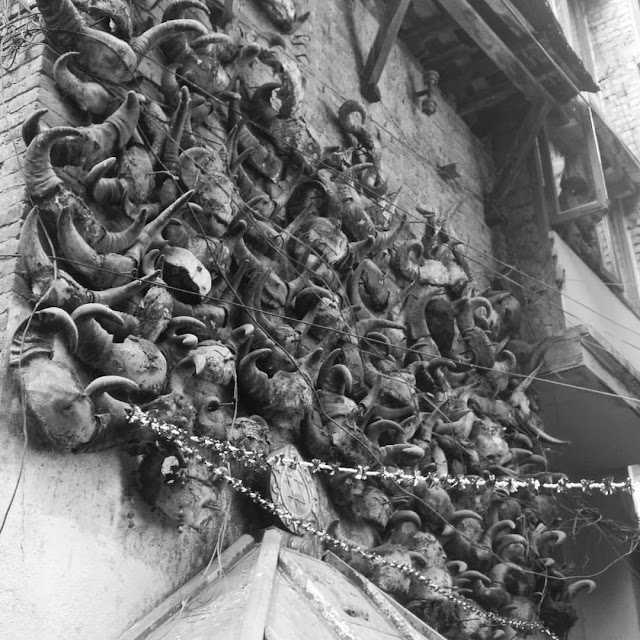नेवार भन्ने शब्दले नेपालको एउटा मूलबासी भाषिक समुदायलाई जनाउंदछ। नेवारहरूको मूलथलो काठमाडौं उपत्यका हो। [१] नेवार कुनै जात वा जाति वा जनजाति वा नश्ल वा धर्म विषेश होईन । नेवार एउटा भाषिक समुदाय हो, नेपाल-वासी (अहिलेको काठमाडौं उपत्यका) को साझा संस्कृति हो। नेवार भित्र कयौँ मूल-जातिहरू छन - (आदिबासी, किरांत, कन्याकुब्ज, बंगाली, राजस्थानी, आसामी, तिबत्ती, मैथिली, आदि)। नेवार भित्र सनातन धर्म अन्तर्गतका धेरै सम्प्रदाय हरु छन - (शैव, शाक्त, तान्त्र, वैदिक, वज्रयान, महायान, नाथ, वैश्नव, आदि)। नेवार भित्र ४ जात-वर्ण (ब्राह्मण, क्षत्रीय, वैश्य, शुद्र) र यस भित्र थुप्रै उप-जातहरू रहेका छन (ज्यापू, श्रेष्ठ, क्षत्रीय, गुभाजू, उराय, सायमी, ब्राह्मण, नाय, गथु, भा, द्यला, आदि)। यसैगरी नेवार भित्र मूलत: ३ नस्ल छन - आर्य, द्रविड, मंगोल । नेवार समुदाय साँस्कृतिक रूपले निकै सम्पन्न जाति हो ।
थर वर्गीकरण
नेवार समुदायमा पेशाका आधारमा जात र थरहरु छुट्याईएका छन् ।
- वैश्य-ब्यापार तथा व्यवसायलाई सधैंभरी आफ्नो पेशा मान्दै आएका लाई तुलाधर, बनिया, आदि ।
- वैश्य-ब्यापार तथा तामाको काम गर्नेलाई ताम्राकार,
- वैश्य-ब्यापार तथा काँस धातुको काम गर्नेलाई कंसाकार,
- इट्टा, झिंगटी, टायल पोल्नेलाई अवाले, अवा,
- माटाका साधन भाडाकुडाँहरू बनाउनेलाई कुमाले, प्रजापति,
- मिठाईजन्य पदार्थ बनाउनेलाई मधिकर्मी, राजकर्णिकार,
- फूलबारीमा काम गर्नेलाई माली, मालाकार,
- प्रायः खेतिपातीको काम गर्नेलाई ज्यापु, महर्जन, डंगोल, सुवाल, तण्डुकार, बलामी, आदि,
- तोरीको तेल पेल्ने अर्थात् तेलहनका व्यवसाय गर्नेलाई सायमी वा मानन्धर,
- फलामजन्य कार्य गर्नेलाई नकर्मी र कौले,
- कपाल अथवा केश काट्नेलाई नापित,
- चित्र लेख्ने र कोठा रंगाउनेलाई पुँ वा चित्रकार,
- लुगामा रङ्ग लगाउनेलाई छिपा वा रंजितकार,
- पालकी बोक्ने लाई दली, पतवार,
- बाजा बजाउने र लुगा सिउने अछुत मानिने वर्गलाई कपाली, कुस्ले, जोगी,
- मासुका कारोबार गर्नेलाई खड्गी,शाही, कसाईं,
- छाला संबन्धी काम गर्ने अछुत मानिएको वर्ग लाई कुलु,
- सर-सफाई गर्ने अछुत मानिएको वर्गलाई सुवर्णकार, पोडे, च्यामे, द्योला, हालाहुलु,
- बौद्द पुरोहित वर्ग लाई गुभाजु, बज्राचार्य,
- बौध मन्दिर पुजारी र सुन-चाँदिका गहना बनाउने काम गर्नेलाई बन्देजु, वरेजु वा शाक्य,
- हिन्दू वैदिक ब्राह्मण वर्ग लाई राजोपाध्याय, द्य ब्राह्मण,द्योउभाजु,
- हिन्दू तान्त्रिक पूजारी लाई कर्माचार्य, आचाजु,
- हिन्दू मन्दिर पुजारी लाई तिर्हुतबाजे,
- ज्योतिशी गर्ने लाई जोशी, दैवज्ञ,
- हिन्दू क्षत्रीय वर्ग र सरकारी/प्रशासनिक र जमिनदारी व्यवसाय गर्नेलाई मल्ल, प्रधान, मास्के, अमात्य, राजभण्डारी, कायस्थ, वैद्य, श्रेष्ठ, आदि





























